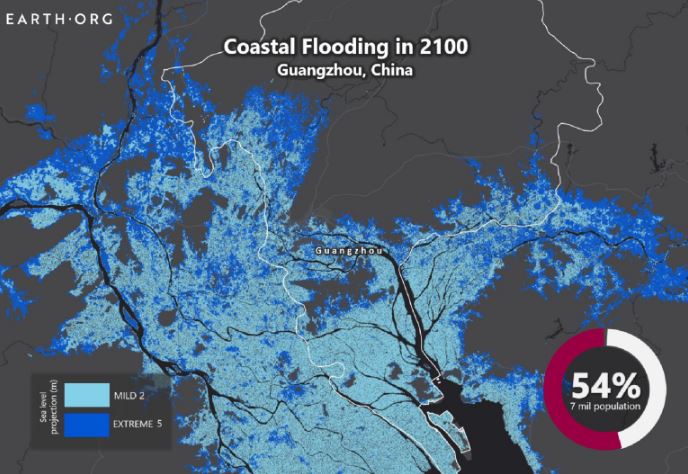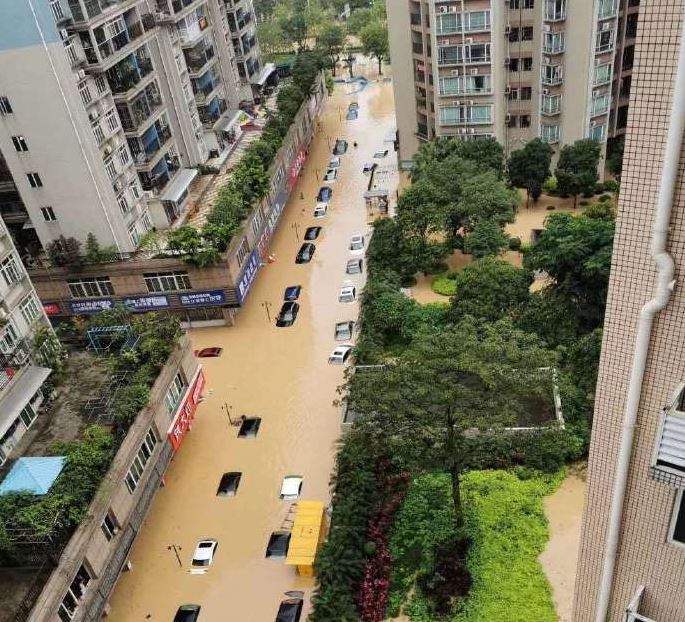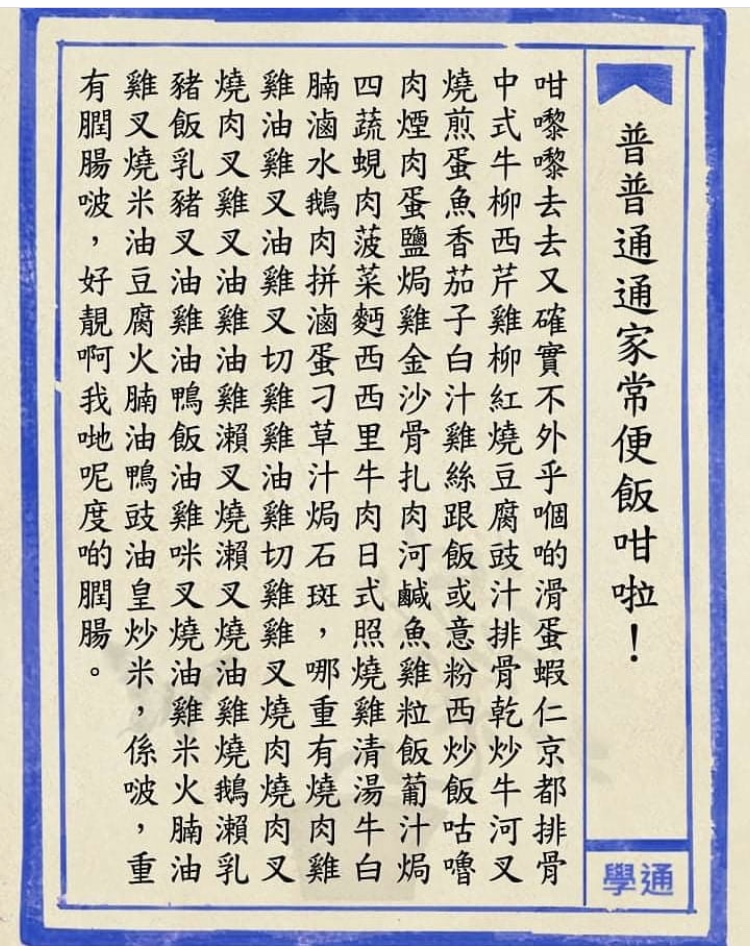
Ok. How should I begin this? The recent anti-Asian violence in the U.S. has put Asians in the limelight. The calling for Asian-American solidarity is long overdue. It takes at least two generations for immigrants from Asian countries to participate in American politics and establish so-called American roots. So I’m an oddball. I’m a first generation immigrant, the “fresh off the boat” kind as Americans mock new immigrants. But I adapted to American life faster than I could’ve done in today’s China where urbanization and technology have developed more rapidly. Not only that I might disappoint many native-born Americans because my English does not have a Chinese accent, I don’t have almond-shaped eyes which are the Asian stereotype. (I now realize why the other day the woman stood behind me in line said to me assuringly that I didn’t look like Chinese. With my mask on, where else could she make her assumption other than my expressive Cantonese eyes.) I’m an oddball also because my birthplace is neither Beijing nor Shanghai. Sorry. The majority seems to know only these Chinese cities. Even Shenzhen is more renowned to some Americans than Guangzhou. So my Guangzhou Dreamin’ starts from my constant monologue. Yes, it’s similar to Jerry Seinfeld-style stand-up comic. I’m not sure if my audience understands my Guangzhou Dreamin’ but I must be one, love my dream talking; two, make my analogy about my dream relatable; and three, dream funny. (This is tough but Cantonese as a language is as funny as Yiddish which often cracks me up.)
“And in the beginning [of stand-up], to just put yourself into what it is—let’s face it—that fairly untenable position, you have to love it badly, madly, maybe even sadly.”
—Jerry Seinfeld
ACT I
So the first thing comes to mind is location! Guangzhou is located in southeastern China with subtropical climate. Like Florida, Guangzhou doesn’t have snowy winter. And also like Florida, Guangzhou is facing a high risk of floods caused by sea level rise. A study of an OECD project in 2013 ranked Guangzhou the top coastal city in the world at the greatest risk of floods in terms of the overall cost of damage. Together with Guangzhou, Miami, New York, and New Orleans are the top four cities accounting for 43% of the forecast total global losses.
Flooding has been a plague for centuries in southern China’s Pearl River Delta. I grew up with floods in Guangzhou. After every torrential rain, sewage overflowed the narrow alleys and inundated my childhood house, No.14 (for more here). Such scene was sung in the Cantonese nursery rhyme: “Lok Jyu Daai Seoi Zam Gaai. . . ” (literally meaning, “A torrential downpour floods streets.”) What can be more soothing to sing a nursery rhyme like that instead of drowning your sorrows in a post-flooding mess?

So you see how strongly I was resonant with the residents when I visited post-Katrina New Orleans in 2010. The most desperate afterthought from the hurricane survivors is “We’ve lost our homes, our memories and our loved ones. What else can be worse than that?”
Well, our weather forecasts and climate projections do show that worse-than-Hurricane-Katrina disasters will arrive more frequently and unexpectedly. What can we do about them? Run away? I did that. I left my flood-prone birthplace Guangzhou for a seemingly higher ground in the U.S. But our power grids, water mains and road infrastructure are susceptible to hurricane storms, snow storms and who knows what other natural disasters coming along.
Stay in a secure shelter nearby? I did that, too. I hunkered down in the attic when I was little watching my parents emptying floodwater out of the house. But the floodwater was like a hungry monster, seizing our furniture and valuables with its insatiable and fluid tongues from all directions. Was I dreaming? Hell no. I saw it with my innocent five-year-old eyes. This is what I still remember now. My childhood memories are tinted with water stains and peeling wall paint from a leaky roof. I’m not writing my fabricated scenes of Guangzhou in 2100. As you see in the cover image by Earth.Org, a Hong Kong-based data journalism think tank, the upper projection of 2 meters sea level rise would displace up to 57 million people in China, most of those in Shanghai and Guangzhou.
If you ask me what’s the difference between Shanghai and Guangzhou, I can tell you a whole day about their many differences. But when it comes to flood mitigation and floodwater management, Guangzhou, Shanghai, and even Miami and New Orleans are vulnerable to climate change-induced flooding. Category 1 hurricanes will surprise Americans more frequently just like the intense tropical cyclones surprise Guangzhou, Hong Kong, and Jakarta. If electric cars are the transportation mode of this century, will the possibility of electric shock drowning be considered in auto design, given the likelihood of cities turning into pools, ponds, and lakes because of the risk of climate change-induced flooding is high?

ACT II
Sometimes I think to myself, hey why not write a poem like The Mamas & The Papas’s “California Dreamin’”? Except that I’m afraid I feel the no-winter California is just like Guangzhou. (music rises) “All the leaves are brown. And the sky is gray. I’ve been for a walk. On a winter’s day, I’d be safe and warm.”
In recent years, Guangzhou is no longer just warm in wintertime. It’s unusually hot. My pals in Guangzhou told me they wore short-sleeves in December. Air-conditioning almost stays on all year round. Guangzhou is as humid as New Orleans or West Palm Beach. Wet heat is harder for me to bear than dry heat felt in Colorado and the Loess Plateau in northwest China. I still remember when I was in New Orleans in May, the humming of air-conditioner outside the buildings was like a different kind of jazz music. I’m not sure if the constant warmer temperature in Guangzhou is actually more eco-friendly. You see, we don’t need winter clothes to shield us from cold. The fewer materials to be used for winter garment, the better for the environment, isn’t it? How about someday we all wear our swim trunks in the dog days of winter?
Again, just to remind you I’m not writing exaggerated science fiction, scientists at the University of Reading, UK and Chinese Academy of Sciences warn that China is facing substantially hotter summers and winters by 2050. South East China is forecast to see the biggest increase, with maximum temperatures increasing by 3.2°C in the day and 2.1°C at night. Evaporation rates are higher at higher temperatures. Can that explain partly why water-rich region like South China is affected by droughts this January (in Chinese text)?
Although I’m not a farmer with hectares of arable land, I can’t live without food. Farmers in Guangzhou are like their counterparts in Louisiana relying on rainfed agriculture. More precipitation is beneficial to Chinese farmers except in the wet southeast. What if the water-rich region is no longer water rich? Warmer temperatures may benefit irrigated farms but they are likely to harm rainfed farms. Hot weather in a flooded megacity with a population north of 15 million people, in my Guangzhou Dreamin’ I’d need to dive instead of wading through brownish sewage water. When paddy fields are no longer lushly green but submerged in floodwater, pigs are hungry for food due to shortage of soybeans imported from New Orleans, will the delicacies that are unique to Guangzhou cooking as much as those in New Orleans be only the blast of the past in 2100?

ACT III
I’m still proud to be a Southerner just like the diaspora of flood victims of Hurricane Katrina feel for their homeland. Funny though, what I see myself is different from what others see me. In China when I traveled to other provinces a decade ago, I was told often that I didn’t look like a Cantonese. I was mistaken for Singaporean, South Korean or a Hong Konger (although Hong Kongers also speak Cantonese). I blamed my good manners. In the U.S., I’m pigeonholed under the ethnic umbrella of Asian-Americans. I feel Canadians’ annoyance of being mistaken for Americans. To non-Asian Americans, Chinese, Japanese, Indians, Nepalis, Tibetans, Mongolians, Filipinos and so forth are non-distinguishable Asian-Americans by ethnicity. Just hope that my oddity stands out in the group marked “Asian-Americans.”
After more than a decade living in America, I feel neither close to the Asian American community nor completely belonging to the non-Asian American social clusters. No accented English, no almond-shaped eyes, no Chinese kinship arriving before me in this land, no black skin, no white skin, no tattoos, no piercings, no hair dye, no sanguine outlook of life like the Big Easy New Orleanians, am I still in my American dream?
As time goes by, my connection with Guangzhou is even odder. The megacity has gone through a transformative facelift from a never-ended city beautification project. I only can dream about what the city used to be before it was replaced by high-rise buildings and wide roads and a cacophony of Mandarin-speaking sounds in different accents. Whether it’s in China or in the U.S., it’s not complete without hearing and even imitating speaking the unique Southern accent.
Yes, Louisiana is different from New York City. Guangzhou is different from Beijing. If Chinese people think NYC represents America, it’s just as unimaginative as Americans believing Beijing is the whole China. Hey, if you want to learn Cajun French and Louisiana Creole, you know where to go in America. If you want to trace the linguistic origin of dimsum, coolie, kowtow, you’ll need to roll your eyeballs to look south on the Map of China.
As climate migration occurs due to inhabitable conditions in the place of origin such as floods and hot temperatures, the cultural assimilation in the place of destination kicks in. Oftentimes, the first few generations may keep their old traditions of the origin. But gradually, the confluence of a much more diverse culture will come into being. If it’s not because of the diaspora of Cantonese-speaking Chinese around the world, Cantonese as a dying creole language in Southern China will not revive and even be adopted in the English vocabulary.
Jerry Seinfeld said it nicely, “The place I like to work is in my head. To try and reach someone else’s. We don’t need to know everything. We can feel what’s real.” As long as you feel as strongly as I do about the health of our habitats in a changing natural environment caused by human activities, my Guangzhou Dreamin’ is not finished. Click here if you’d like to share with me your ingredients of hope and appreciation.
